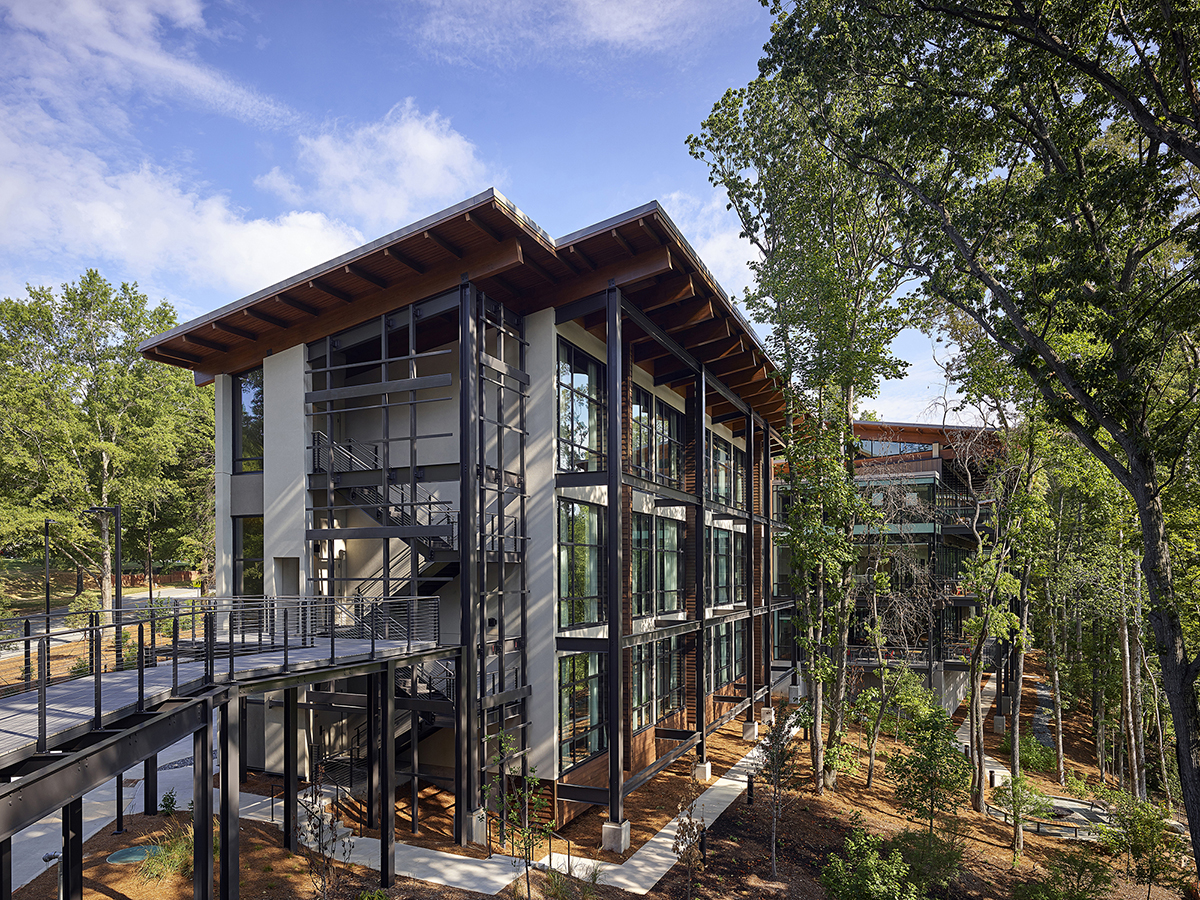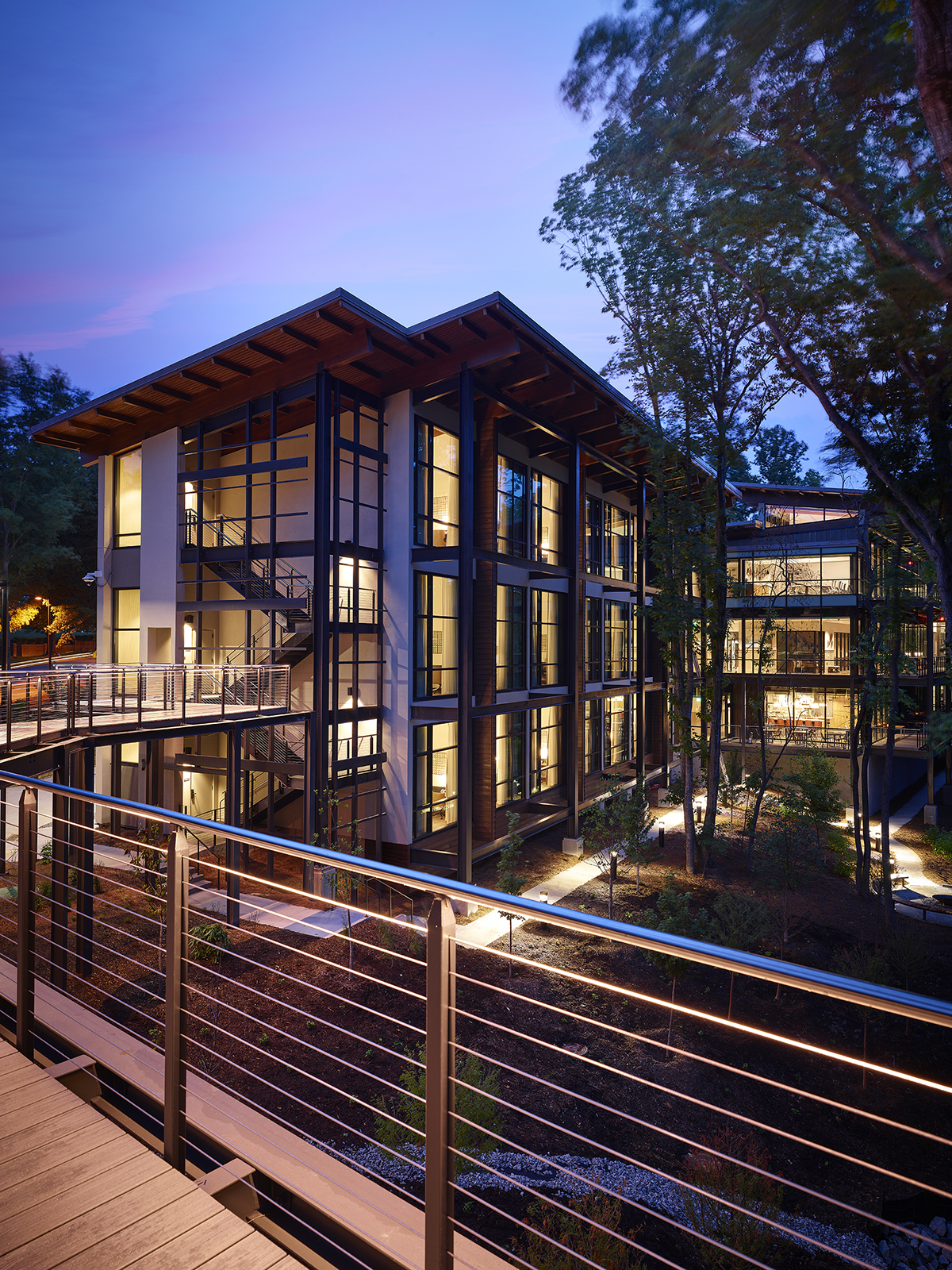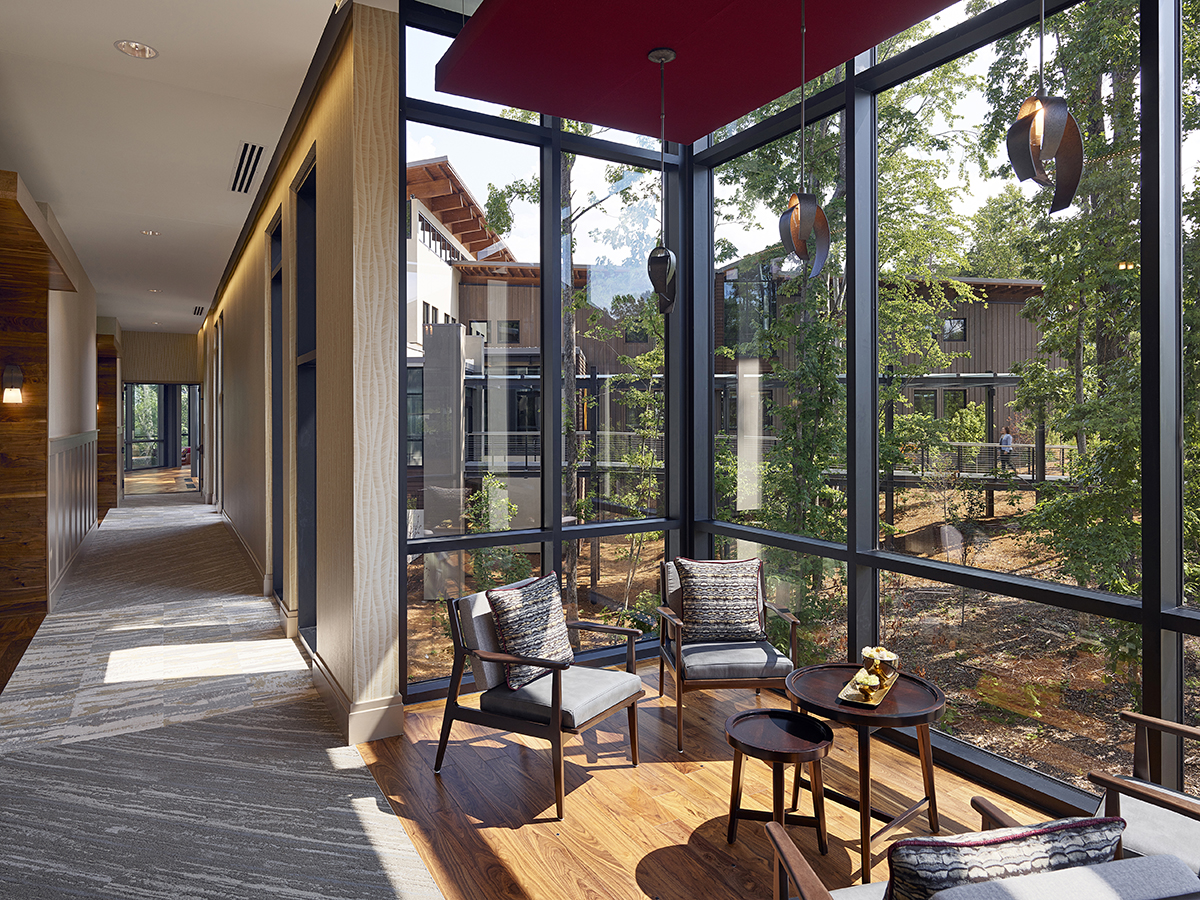AISC
Truist Leadership Institute
National Award - $15 Million to $75 Million
This design exhibits a great integration of steel and wood structure. You get the feeling that there's a meaningful relationship formed between the two materials that really supports one another, and the design intent. —2021 IDEAS² Judge Anders Lasater, AIA, CEO and Principal Architect, Anders Lasater Architects, Los Angeles
The Truist Leadership Institute is a cluster of five buildings comprising 60,000 sq. ft, all nestled on a narrow, sloping, wooded site in Greensboro, N.C. The owner desired a retreat-like, holistic design that blurred the boundary between the natural world and the built environment. Steel made it all possible and is part of the “soul” of the building, which follows the shape and form of the wooded landscape.
The $35 million project includes two three-story corporate training and conference facilities and two 24-person guest wings for overnight accommodations. It also features a multipurpose “treehouse,” nestled some 20 ft high in the treetops among three large oaks. Each building provides open, sweeping views of the woods and a nearby lake. Floor-to-ceiling glass, open stairs, and wide decks blend the inside with the outdoors, and steel-supported walkways connect the buildings, providing a welcoming entry point for guests.
Steel was central to the project aesthetic and is exposed both inside and outside. Approximately 430 tons worth of steel was used, much of which met architecturally exposed structural steel (AESS) requirements. Architect Jeffrey Sowers notes, “Sometimes people think of steel as cold and hard. But in this project, it is just the opposite. Steel helped us make it warm, fuzzy, and inviting.” He adds that the intent was for the vertical steel structural columns to feel like trees married to heavy timber-framed roof trusses that act as branches—with a large roof overhang becoming the “tree” canopy. The first floors of the buildings are elevated over the steel foundation framing, which makes the multistory buildings seem to “float,” minimizing site disruption and creating a sense of drama.
It took careful planning during the design and engineering phase to marry blue laminated steel with exposed timber-frame beams, aligning weight-bearing points and connections to transfer the sizeable load from the timbers through the steel and onto the supporting footings. In the guest wings, the challenge was even more complex, involving the perfect alignment of timbers and structural steel columns. The use of moment connections eliminated the need for brace frames and contributed to the openness of the building.
Because of the importance of steel to this project, the design team worked closely with fabricator SteelFab to develop two custom AESS finish categories that balanced aesthetic concerns with budget realities. These custom categories combined selected requirements from AESS categories 1 through 4 (for details on the various levels of AESS, see “Maximum Exposure” in the November 2017 issue of Modern Steel Construction. A more refined finish was used where the steel would be most visible, and a less refined finish was employed in areas where the structure would not be viewed up close. Close attention was required at the connections to ensure proper finishing of the welds, which was also addressed by the custom AESS categories.
The most unique of the five buildings in the project is the “treehouse,” a multipurpose facility connected to the main campus by a steel pedestrian bridge. The building uses a single, central column to act as a “tree trunk,” with steel braces extending like branches for support. The building appears to float in the treetops, with floor-to-ceiling glass providing 360 ° views while the forest floor below remains exposed and undisturbed.
The team at Fluhrer Reed used RAM Structural System and RAM Elements to create an analytical model that was transferred into the 3D building information model (BIM). The software was used to create a 3D model of the skeleton of the building, and the architectural “skin” and building systems were then created and applied, facilitating simpler planning of these systems around steel beams and heavy timbers.
Thanks to early collaboration between the design team and fabricator, including making up-front decisions about finishes and moment welds, the team was able to truncate timelines, control costs, and expedite construction. The early collaboration also allowed general contractor Frank L. Blum to place a mill order several months before issuance of construction documents.
The project is targeting LEED Silver certification and is designed for energy conservation and reduced water use. Low- and no-VOC materials are used throughout, and trees that were taken down were salvaged and repurposed as patterned walls, panels, and doors. And of course, the project’s steel is contributing to the sustainable cause, thanks to its high recycled content and cradle-to-cradle characteristics.
For more on this project, see the article “Seeing the Forest for the Trees” in the June 2020 issue of Modern Steel Construction.
Steel fabricator: SteelFab, Inc., Raleigh, N.C. *AISC Member* *AISC Certified Fabricator*
Structural engineer: Fluhrer Reed, PA, Raleigh, N.C.
Architect: CJMW Architecture, Winston-Salem, N.C.
General contractor: Frank L. Blum Construction, Winston-Salem, N.C.
Owner: Truist Leadership Institute, Greensboro, N.C.
- Project Category: Year 2021
- Location: Greensboro, NC
- Award Category: National Award - $15 million to $75 million
- Year Completed: 2018
- Submitting Firm: Fluhrer Reed
- Photo Credit: 1 and 4 - Jennifer Bostic and Lee Runion; 2, 3, 5, 6 - Tom Holdsworth






